Yorkshire is full of rugged dales, heather-covered moors moors, and quaint villages. It’s also home to some of the most magnificent manor houses and stately homes in England. These Yorkshire manors, castles and estates have served as the backdrop to some of the most beloved tales in English literature.
In novels like Jane Eyre and Wuthering Heights, the Brontë sisters drew their inspiration from these lands. They crafted stories that have captivated readers for generations. Even for children, the Yorkshire manor house and garden featured in The Secret Garden has stirred millions of imaginations.
One of the best ways to step into the pages of these books is to explore the many Yorkshire manors and stately homes that dot the landscape. From the grand halls of Castle Howard to the ruins of Bolton Castle, the rugged Yorkshire coast to the rolling Yorkshire dales, let’s take a look through the most charming country houses and stately Yorkshire manors.
Castle Howard (North Yorkshire)
Castle Howard, set within the Howardian Hills Area of Outstanding Natural Beauty, is one of the most iconic Yorkshire manors and stately homes. Located about 15 miles northeast of York, this estate is iconic not only for its architectural grandeur. It’s also famous for its role in many period films and TV shows like “Brideshead Revisited” and “Bridgerton.”

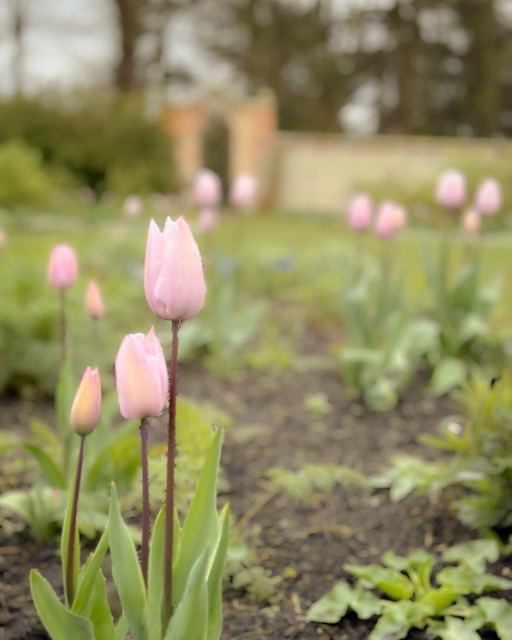
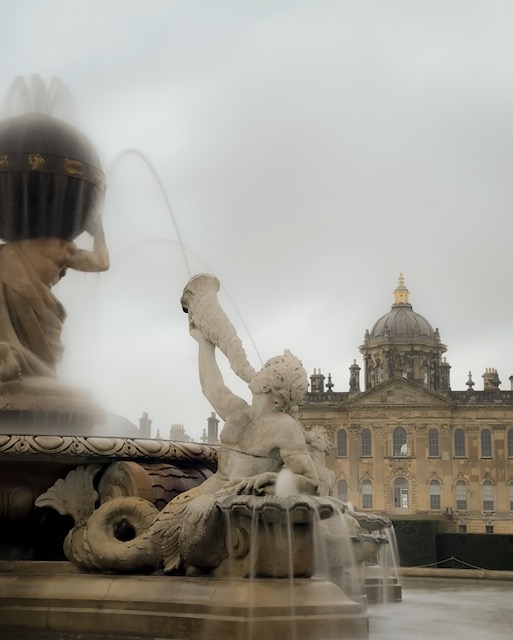
Construction of Castle Howard began in 1699 and took over a century. The house was first designed in the Baroque style. However, the lengthy construction period led to the incorporation of the mid-1700s Palladian style.
In 1940 the house was severely damaged in a fire. Its stunning dome collapsed, with nearly a third of the building exposed to the elements. Restoration efforts began in the following decades and continue to this day.
The gardens of Castle Howard are as impressive as the house itself. They feature a variety of landscapes from formal gardens to natural woodlands. Highlights include the Temple of the Four Winds and the Atlas Fountain, each offering unique views over the estate.
A visit to Castle Howard can be perfectly paired with a trip to Malton, the foodie capital of Yorkshire. Malton offers a variety of local eateries and shops. It’s a great stop for lunch or to gather picnic supplies for enjoying in the countryside. It’s also a great location to start exploring the North York Moors.
Harewood House (West Yorkshire)
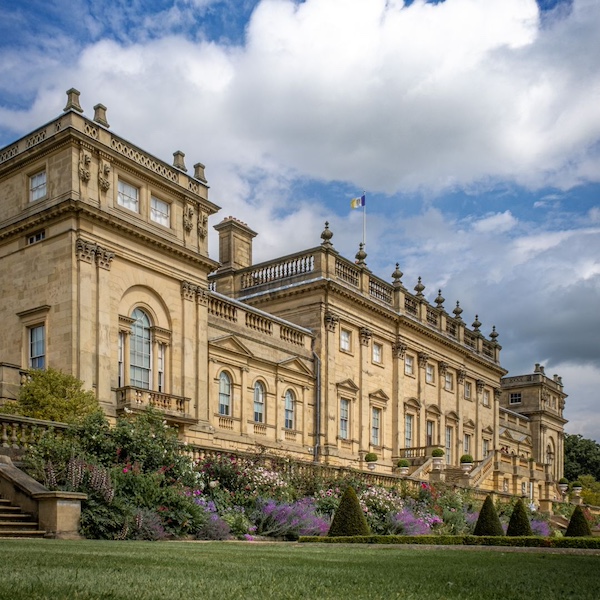
Harewood House, situated less than ten miles from Leeds in West Yorkshire, demonstrates the elegance and artistry of the 18th century. This impressive estate is famous for its stunning architecture, significant art collection, and beautifully landscaped grounds.
The construction of Harewood House was completed in the late 1700s. Its interiors were masterfully designed by the renowned Robert Adam and there’s a magnificent collection of furniture by Thomas Chippendale. The house’s art galleries host a wide range of paintings, including works by famous artists like J.M.W. Turner.
The gardens and grounds of Harewood House are a key attraction, designed by famous landscape architect Capability Brown. The gardens contain a variety of landscapes, from the formal walled garden to the serene lakeside gardens.
Newby Hall (North Yorkshire)
Newby Hall, a quintessential Georgian manor house, sits along the banks of the River Ure near Ripon in North Yorkshire. It is a perfect example of the elegance and refinement of the 18th century. This stately home is best known for its exquisite interiors and expansive gardens.
Sir Christopher Wren, the architect of St. Paul’s Cathedral in London, designed and built this historic house. John Carr and Robert Adam, one of Britain’s most renowned Neoclassical architects, later enlarged the house.
The meticulously restored rooms display an array of period furniture and art. The highlight is the Gobelins Tapestry Room, with beautiful tapestries that offer a look into the opulence of the era.
Newby Hall showcases 40 acres of gardens designed to captivate visitors year-round. From the formal symmetry of the herbaceous borders to the tranquil woodland walks, each garden space is unique. The double herbaceous border, one of the longest in the country, is a spectacular sight during the summer months.
Bolton Castle (North Yorkshire)
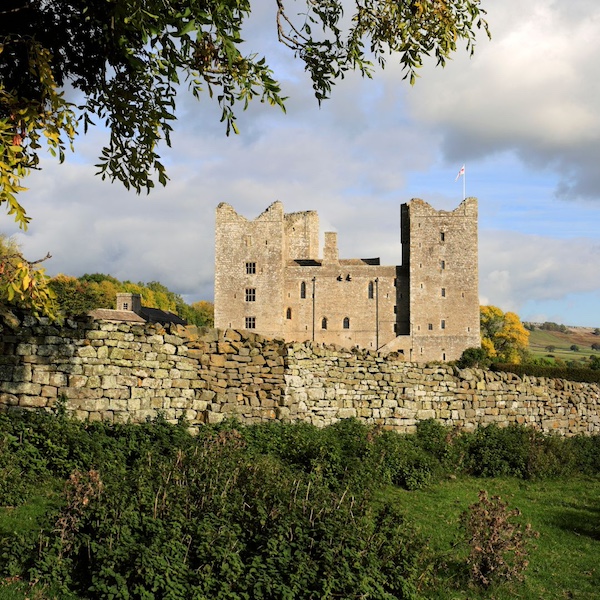
Bolton Castle, set amidst the breathtaking scenery of Wensleydale in the Yorkshire Dales National Park, is a captivating 14th-century fortress with a storied past. This imposing medieval castle, located near the quaint village of Leyburn, offers an authentic glimpse into England’s rich history, including its role as a prison for Mary, Queen of Scots.
Although partially ruined, much of Bolton Castle remains intact. You can explore of its towers, dungeons, and living quarters. The castle’s architecture and defensive features, such as the arrow slits and battlements, paint a picture of medieval life and warfare.
Bolton Castle’s beautifully preserved gardens include a traditional maze, a vineyard, and an herb garden. They reflect the castle’s historical use of plants for medicine, cooking, and cosmetics.
The falconry displays are a particular highlight, offering an up-close experience with birds of prey. They give a taste of the ancient art of falconry, once an essential aspect of noble life.
Ripley Castle (North Yorkshire)
Ripley Castle is located in the picturesque village of Ripley on the outskirts of Harrogate and the Yorkshire Dales. It’s a historic gem that has been the seat of the Ingilby family for over 700 years. This enchanting estate offers a blend of medieval architecture with later additions, providing a fascinating glimpse into centuries of British history.
Wandering through Ripley Castle, you’ll discover stories and artifacts that showcase the enduring legacy of the Ingilby family. The guided tours of the castle are highly informative. You’ll explore elegantly furnished rooms that house a collection of family portraits, antique furniture, and armor.
The castle’s beautifully landscaped grounds and gardens include a walled garden, pleasure grounds, and lakeside walks. The gardens are especially famous for their stunning flower and plant displays. They provide a tranquil and scenic backdrop for a leisurely stroll.
Ripley Village, designed in the 19th century to resemble a model estate village, adds to the charm of the visit. Its quaint shops and traditional English tearooms offering a perfect spot for refreshment after exploring the castle and its grounds.
Brodsworth Hall (South Yorkshire)
Brodsworth Hall, situated near Doncaster in South Yorkshire and administered by English Heritage, is virtually unchanged since the 1860s. This stunning country house offers visitors an authentic glimpse into the life of a Victorian family.
The interiors of Brodsworth Hall demonstrate the opulence and eclectic taste of the Victorian era. Each room has been meticulously maintained to reflect its original 19th-century splendor. From the grand drawing rooms to the more intimate family quarters, the hall provides a rare opportunity to step directly into the daily life of its former inhabitants.
Surrounding the hall are extensive pleasure gardens, which have been restored to their Victorian-era layout and design. The gardens are divided into a series of smaller, themed areas, including a formal parterre, a fern dell, and a wild rose dell.
Burton Agnes Hall (East Yorkshire)
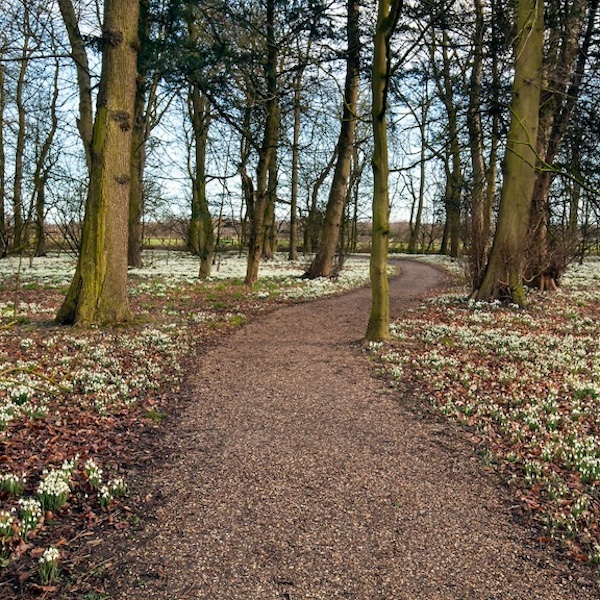
Burton Agnes Hall, nestled in the East Riding of Yorkshire, stands as a stunning example of Elizabethan architecture, complemented by centuries of family history. This exquisite manor house, built in the early 1600s, has been the home of the Griffiths family for more than four centuries and is celebrated for its unique blend of historical charm and homely warmth.
The hall’s architecture is spectacular, with its original Elizabethan carvings and plasterwork still intact, showcasing the craftsmanship and artistic skill of the period. Inside, visitors are treated to a collection of art and furniture that spans from the Elizabethan era to the present day, including contemporary pieces that reflect the family’s ongoing passion for the arts.
The gardens at Burton Agnes Hall are equally lovely. They provide a variety of experiences from formal layouts to more whimsical and naturalistic plantings. The walled garden is a highlight, with imaginative plantings, a maze, giant board games, and a collection of campanulas named after the hall. The woodland walk and the classical pond offer peaceful retreats within the estate’s grounds.
Wentworth Woodhouse (South Yorkshire)
Wentworth Woodhouse, located near Rotherham in South Yorkshire, is a grand architectural masterpiece with a façade that stretches over 600 feet. It’s the largest of the Yorkshire manors and one of the largest private residences in the United Kingdom. This imposing estate boasts a fascinating history dating back to the 17th century, though most of the current structure was built in the 18th century.
The house is renowned for its unique blend of architectural styles, featuring both Baroque and Palladian elements. The interiors of Wentworth Woodhouse are just as impressive. There are numerous stately rooms that showcase an array of period furnishings, intricate plasterwork, and an extensive art collection.
The estate’s grounds are gigantic, offering visitors the chance to explore meticulously landscaped gardens, serene parklands, and picturesque follies. The gardens include formal areas with striking designs, as well as more natural landscapes that invite leisurely strolls and peaceful contemplation.
Nostell Priory (West Yorkshire)
Nostell Priory, nestled near Wakefield in West Yorkshire and managed by the National Trust, is full of art, architecture, and landscaped beauty. This 18th-century Palladian house was originally founded as a medieval priory. It was later transformed into the stately home we see today, housing the Winn family for generations.
The house itself is a testament to the elegance of the Palladian style, with its symmetrical design and classical proportions. Inside visitors can explore a series of richly decorated rooms that house an impressive collection of Chippendale furniture. The collection is one of the most extensive in the country, and sits alongside exquisite paintings and antiques.
Nostell Priory is also celebrated for its extensive parkland and gardens, offering a variety of landscapes to discover. The formal gardens, with their intricate bedding schemes, provide a colorful spectacle. The wider parkland offers lovely walks through woodlands and by lakes, perfect for a leisurely day out in nature.
Sewerby Hall (East Yorkshire)
Sewerby Hall is perched majestically on the cliffs overlooking Bridlington Bay in East Yorkshire. It offers a stunning combination of early 18th-century architecture with expansive gardens and a picturesque setting by the sea.
The hall itself, built in a classic Georgian style, has been restored to reflect its appearance in the early 1900s. It provides visitors with a picture of Edwardian life. Period furniture and artifacts adorn the interior rooms, telling the story of the hall’s history and its former residents.
Sewerby Hall sits within 50 acres of beautifully landscaped gardens. It offers a peaceful retreat with stunning views of the Yorkshire coast. The gardens feature a mix of formal areas, woodland walks, and a zoo, home to a variety of animals, adding an unusual but delightful twist to the traditional country house visit.
Bonus: Fountains Abbey (North Yorkshire)
As a bonus to our exploration of Yorkshire manors and stately homes, we can’t overlook the majestic ruins of Fountains Abbey.


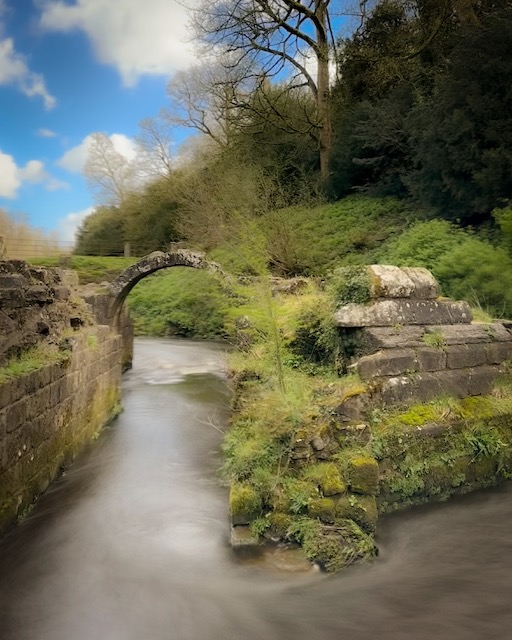
While not a manor or stately home, this UNESCO World Heritage Site near Ripon in North Yorkshire is one of the most remarkable and historically significant ruins in the country. It deserves a special mention for its sheer beauty and historical depth.
Founded in 1132, Fountains Abbey, now managed by the National Trust is one of the largest and best-preserved Cistercian monasteries in England. The abbey’s ruins, set within the beautiful 800-acre Studley Royal Park, offer a glimpse into monastic life over 800 years ago.
The scale and beauty of the remaining structures, including the towering abbey church and the extensive cloisters, demonstrate the abbey’s historical importance and architectural grandeur.
Adjacent to the abbey ruins is the Studley Royal Water Garden, a masterpiece of English landscaping. This garden blends natural landscapes with formal water features, ornamental temples, and follies. They create a tranquil and picturesque setting that complements the historical aura of the abbey ruins.
The bottom line: Yorkshire manors and stately homes
Each of the beautiful Yorkshire manors offer a window into the region’s rich history and cultural heritage. Yorkshire’s manors, gardens, and stately homes have something for everyone, whether you love English architecture, serene gardens, or historic stories.
If you’re looking for more Yorkshire travel inspiration, look no further! Check out our other Yorkshire posts here.
Yorkshire is full of rugged dales, heather-covered moors moors, and quaint villages. It’s also home to some of the most magnificent manor houses and stately homes in England. These Yorkshire manors, castles and estates have served as the backdrop to some of the most beloved tales in English literature.
In novels like Jane Eyre and Wuthering Heights, the Brontë sisters drew their inspiration from these lands. They crafted stories that have captivated readers for generations. Even for children, the Yorkshire manor house and garden featured in The Secret Garden has stirred millions of imaginations.
One of the best ways to step into the pages of these books is to explore the many Yorkshire manors and stately homes that dot the landscape. From the grand halls of Castle Howard to the ruins of Bolton Castle, the rugged Yorkshire coast to the rolling Yorkshire dales, let’s take a look through the most charming country houses and stately Yorkshire manors.
Castle Howard (North Yorkshire)
Castle Howard, set within the Howardian Hills Area of Outstanding Natural Beauty, is one of the most iconic Yorkshire manors and stately homes. Located about 15 miles northeast of York, this estate is iconic not only for its architectural grandeur. It’s also famous for its role in many period films and TV shows like “Brideshead Revisited” and “Bridgerton.”



Construction of Castle Howard began in 1699 and took over a century. The house was first designed in the Baroque style. However, the lengthy construction period led to the incorporation of the mid-1700s Palladian style.
In 1940 the house was severely damaged in a fire. Its stunning dome collapsed, with nearly a third of the building exposed to the elements. Restoration efforts began in the following decades and continue to this day.
The gardens of Castle Howard are as impressive as the house itself. They feature a variety of landscapes from formal gardens to natural woodlands. Highlights include the Temple of the Four Winds and the Atlas Fountain, each offering unique views over the estate.
A visit to Castle Howard can be perfectly paired with a trip to Malton, the foodie capital of Yorkshire. Malton offers a variety of local eateries and shops. It’s a great stop for lunch or to gather picnic supplies for enjoying in the countryside. It’s also a great location to start exploring the North York Moors.
Harewood House (West Yorkshire)

Harewood House, situated less than ten miles from Leeds in West Yorkshire, demonstrates the elegance and artistry of the 18th century. This impressive estate is famous for its stunning architecture, significant art collection, and beautifully landscaped grounds.
The construction of Harewood House was completed in the late 1700s. Its interiors were masterfully designed by the renowned Robert Adam and there’s a magnificent collection of furniture by Thomas Chippendale. The house’s art galleries host a wide range of paintings, including works by famous artists like J.M.W. Turner.
The gardens and grounds of Harewood House are a key attraction, designed by famous landscape architect Capability Brown. The gardens contain a variety of landscapes, from the formal walled garden to the serene lakeside gardens.
Newby Hall (North Yorkshire)
Newby Hall, a quintessential Georgian manor house, sits along the banks of the River Ure near Ripon in North Yorkshire. It is a perfect example of the elegance and refinement of the 18th century. This stately home is best known for its exquisite interiors and expansive gardens.
Sir Christopher Wren, the architect of St. Paul’s Cathedral in London, designed and built this historic house. John Carr and Robert Adam, one of Britain’s most renowned Neoclassical architects, later enlarged the house.
The meticulously restored rooms display an array of period furniture and art. The highlight is the Gobelins Tapestry Room, with beautiful tapestries that offer a look into the opulence of the era.
Newby Hall showcases 40 acres of gardens designed to captivate visitors year-round. From the formal symmetry of the herbaceous borders to the tranquil woodland walks, each garden space is unique. The double herbaceous border, one of the longest in the country, is a spectacular sight during the summer months.
Bolton Castle (North Yorkshire)

Bolton Castle, set amidst the breathtaking scenery of Wensleydale in the Yorkshire Dales National Park, is a captivating 14th-century fortress with a storied past. This imposing medieval castle, located near the quaint village of Leyburn, offers an authentic glimpse into England’s rich history, including its role as a prison for Mary, Queen of Scots.
Although partially ruined, much of Bolton Castle remains intact. You can explore of its towers, dungeons, and living quarters. The castle’s architecture and defensive features, such as the arrow slits and battlements, paint a picture of medieval life and warfare.
Bolton Castle’s beautifully preserved gardens include a traditional maze, a vineyard, and an herb garden. They reflect the castle’s historical use of plants for medicine, cooking, and cosmetics.
The falconry displays are a particular highlight, offering an up-close experience with birds of prey. They give a taste of the ancient art of falconry, once an essential aspect of noble life.
Ripley Castle (North Yorkshire)
Ripley Castle is located in the picturesque village of Ripley on the outskirts of Harrogate and the Yorkshire Dales. It’s a historic gem that has been the seat of the Ingilby family for over 700 years. This enchanting estate offers a blend of medieval architecture with later additions, providing a fascinating glimpse into centuries of British history.
Wandering through Ripley Castle, you’ll discover stories and artifacts that showcase the enduring legacy of the Ingilby family. The guided tours of the castle are highly informative. You’ll explore elegantly furnished rooms that house a collection of family portraits, antique furniture, and armor.
The castle’s beautifully landscaped grounds and gardens include a walled garden, pleasure grounds, and lakeside walks. The gardens are especially famous for their stunning flower and plant displays. They provide a tranquil and scenic backdrop for a leisurely stroll.
Ripley Village, designed in the 19th century to resemble a model estate village, adds to the charm of the visit. Its quaint shops and traditional English tearooms offering a perfect spot for refreshment after exploring the castle and its grounds.
Brodsworth Hall (South Yorkshire)
Brodsworth Hall, situated near Doncaster in South Yorkshire and administered by English Heritage, is virtually unchanged since the 1860s. This stunning country house offers visitors an authentic glimpse into the life of a Victorian family.
The interiors of Brodsworth Hall demonstrate the opulence and eclectic taste of the Victorian era. Each room has been meticulously maintained to reflect its original 19th-century splendor. From the grand drawing rooms to the more intimate family quarters, the hall provides a rare opportunity to step directly into the daily life of its former inhabitants.
Surrounding the hall are extensive pleasure gardens, which have been restored to their Victorian-era layout and design. The gardens are divided into a series of smaller, themed areas, including a formal parterre, a fern dell, and a wild rose dell.
Burton Agnes Hall (East Yorkshire)

Burton Agnes Hall, nestled in the East Riding of Yorkshire, stands as a stunning example of Elizabethan architecture, complemented by centuries of family history. This exquisite manor house, built in the early 1600s, has been the home of the Griffiths family for more than four centuries and is celebrated for its unique blend of historical charm and homely warmth.
The hall’s architecture is spectacular, with its original Elizabethan carvings and plasterwork still intact, showcasing the craftsmanship and artistic skill of the period. Inside, visitors are treated to a collection of art and furniture that spans from the Elizabethan era to the present day, including contemporary pieces that reflect the family’s ongoing passion for the arts.
The gardens at Burton Agnes Hall are equally lovely. They provide a variety of experiences from formal layouts to more whimsical and naturalistic plantings. The walled garden is a highlight, with imaginative plantings, a maze, giant board games, and a collection of campanulas named after the hall. The woodland walk and the classical pond offer peaceful retreats within the estate’s grounds.
Wentworth Woodhouse (South Yorkshire)
Wentworth Woodhouse, located near Rotherham in South Yorkshire, is a grand architectural masterpiece with a façade that stretches over 600 feet. It’s the largest of the Yorkshire manors and one of the largest private residences in the United Kingdom. This imposing estate boasts a fascinating history dating back to the 17th century, though most of the current structure was built in the 18th century.
The house is renowned for its unique blend of architectural styles, featuring both Baroque and Palladian elements. The interiors of Wentworth Woodhouse are just as impressive. There are numerous stately rooms that showcase an array of period furnishings, intricate plasterwork, and an extensive art collection.
The estate’s grounds are gigantic, offering visitors the chance to explore meticulously landscaped gardens, serene parklands, and picturesque follies. The gardens include formal areas with striking designs, as well as more natural landscapes that invite leisurely strolls and peaceful contemplation.
Nostell Priory (West Yorkshire)
Nostell Priory, nestled near Wakefield in West Yorkshire and managed by the National Trust, is full of art, architecture, and landscaped beauty. This 18th-century Palladian house was originally founded as a medieval priory. It was later transformed into the stately home we see today, housing the Winn family for generations.
The house itself is a testament to the elegance of the Palladian style, with its symmetrical design and classical proportions. Inside visitors can explore a series of richly decorated rooms that house an impressive collection of Chippendale furniture. The collection is one of the most extensive in the country, and sits alongside exquisite paintings and antiques.
Nostell Priory is also celebrated for its extensive parkland and gardens, offering a variety of landscapes to discover. The formal gardens, with their intricate bedding schemes, provide a colorful spectacle. The wider parkland offers lovely walks through woodlands and by lakes, perfect for a leisurely day out in nature.
Sewerby Hall (East Yorkshire)
Sewerby Hall is perched majestically on the cliffs overlooking Bridlington Bay in East Yorkshire. It offers a stunning combination of early 18th-century architecture with expansive gardens and a picturesque setting by the sea.
The hall itself, built in a classic Georgian style, has been restored to reflect its appearance in the early 1900s. It provides visitors with a picture of Edwardian life. Period furniture and artifacts adorn the interior rooms, telling the story of the hall’s history and its former residents.
Sewerby Hall sits within 50 acres of beautifully landscaped gardens. It offers a peaceful retreat with stunning views of the Yorkshire coast. The gardens feature a mix of formal areas, woodland walks, and a zoo, home to a variety of animals, adding an unusual but delightful twist to the traditional country house visit.
Bonus: Fountains Abbey (North Yorkshire)
As a bonus to our exploration of Yorkshire manors and stately homes, we can’t overlook the majestic ruins of Fountains Abbey.



While not a manor or stately home, this UNESCO World Heritage Site near Ripon in North Yorkshire is one of the most remarkable and historically significant ruins in the country. It deserves a special mention for its sheer beauty and historical depth.
Founded in 1132, Fountains Abbey, now managed by the National Trust is one of the largest and best-preserved Cistercian monasteries in England. The abbey’s ruins, set within the beautiful 800-acre Studley Royal Park, offer a glimpse into monastic life over 800 years ago.
The scale and beauty of the remaining structures, including the towering abbey church and the extensive cloisters, demonstrate the abbey’s historical importance and architectural grandeur.
Adjacent to the abbey ruins is the Studley Royal Water Garden, a masterpiece of English landscaping. This garden blends natural landscapes with formal water features, ornamental temples, and follies. They create a tranquil and picturesque setting that complements the historical aura of the abbey ruins.
The bottom line: Yorkshire manors and stately homes
Each of the beautiful Yorkshire manors offer a window into the region’s rich history and cultural heritage. Yorkshire’s manors, gardens, and stately homes have something for everyone, whether you love English architecture, serene gardens, or historic stories.
If you’re looking for more Yorkshire travel inspiration, look no further! Check out our other Yorkshire posts here.